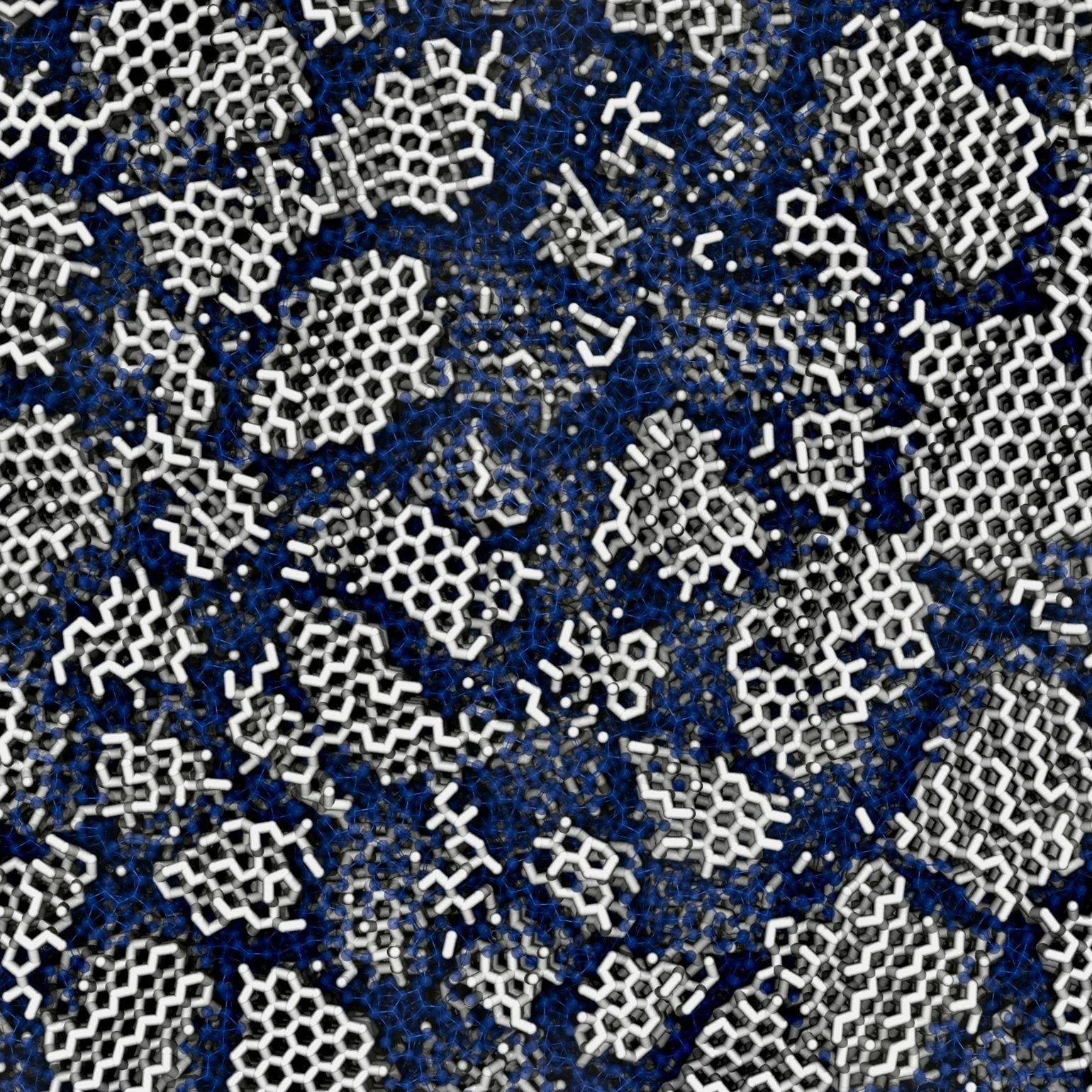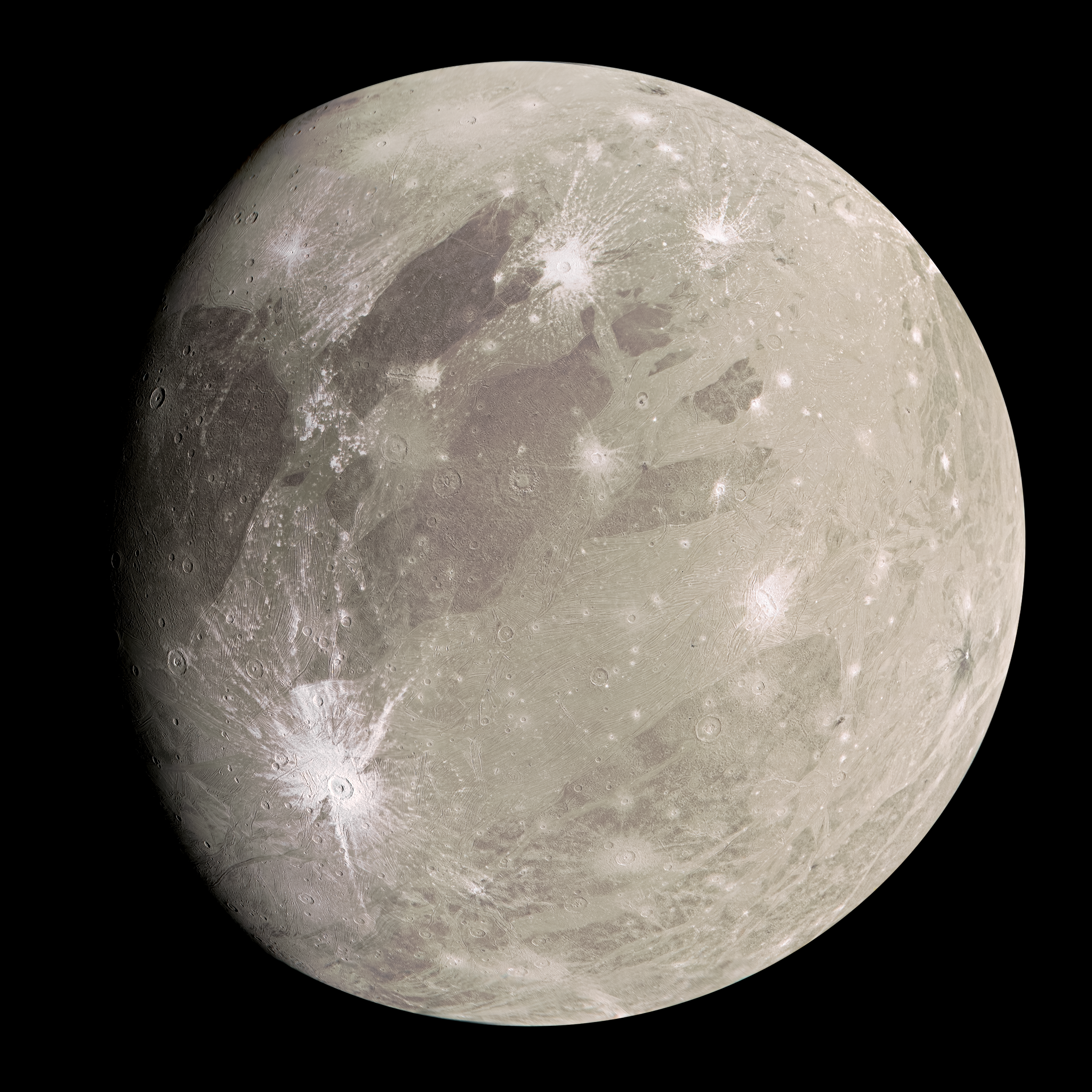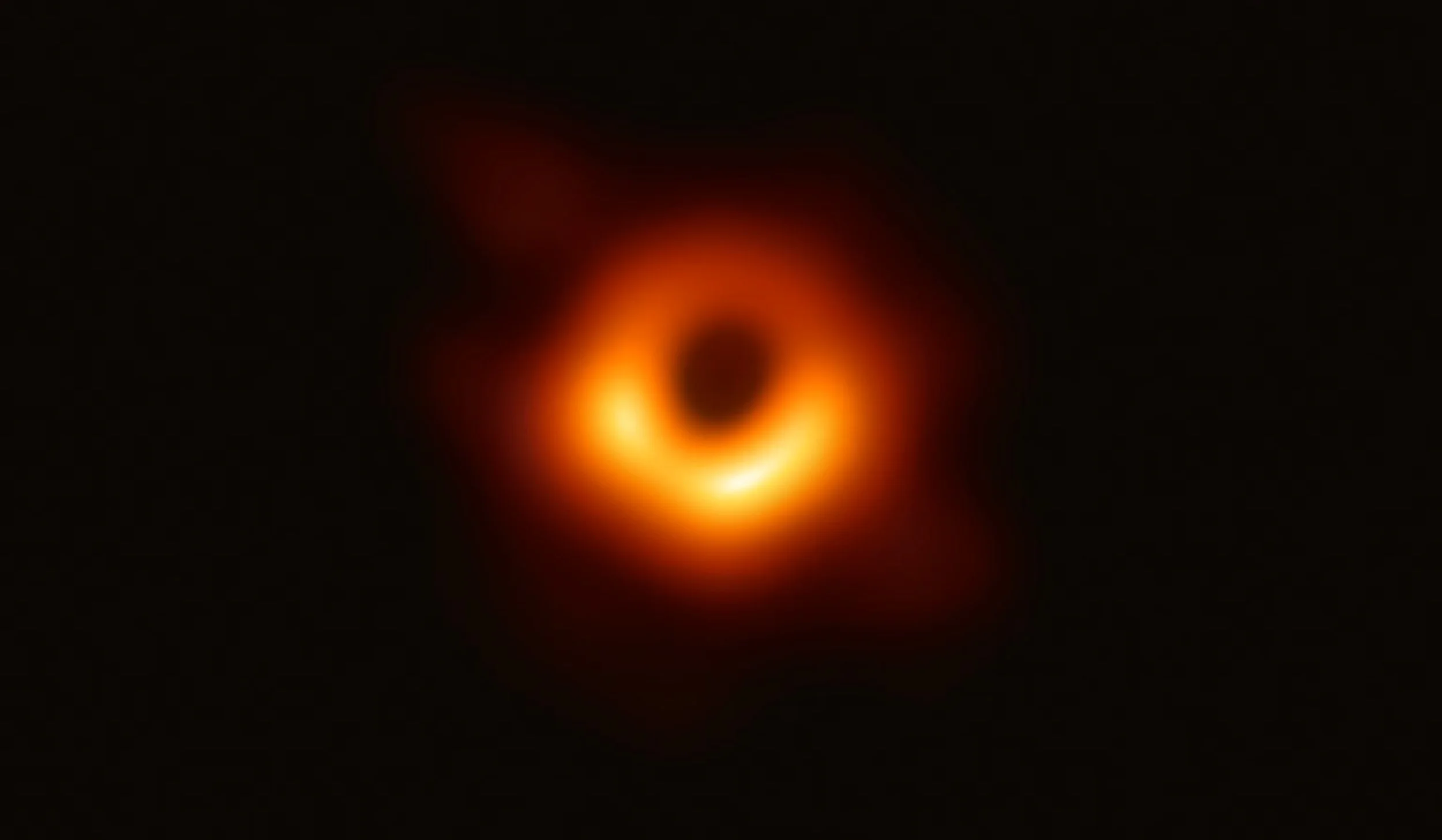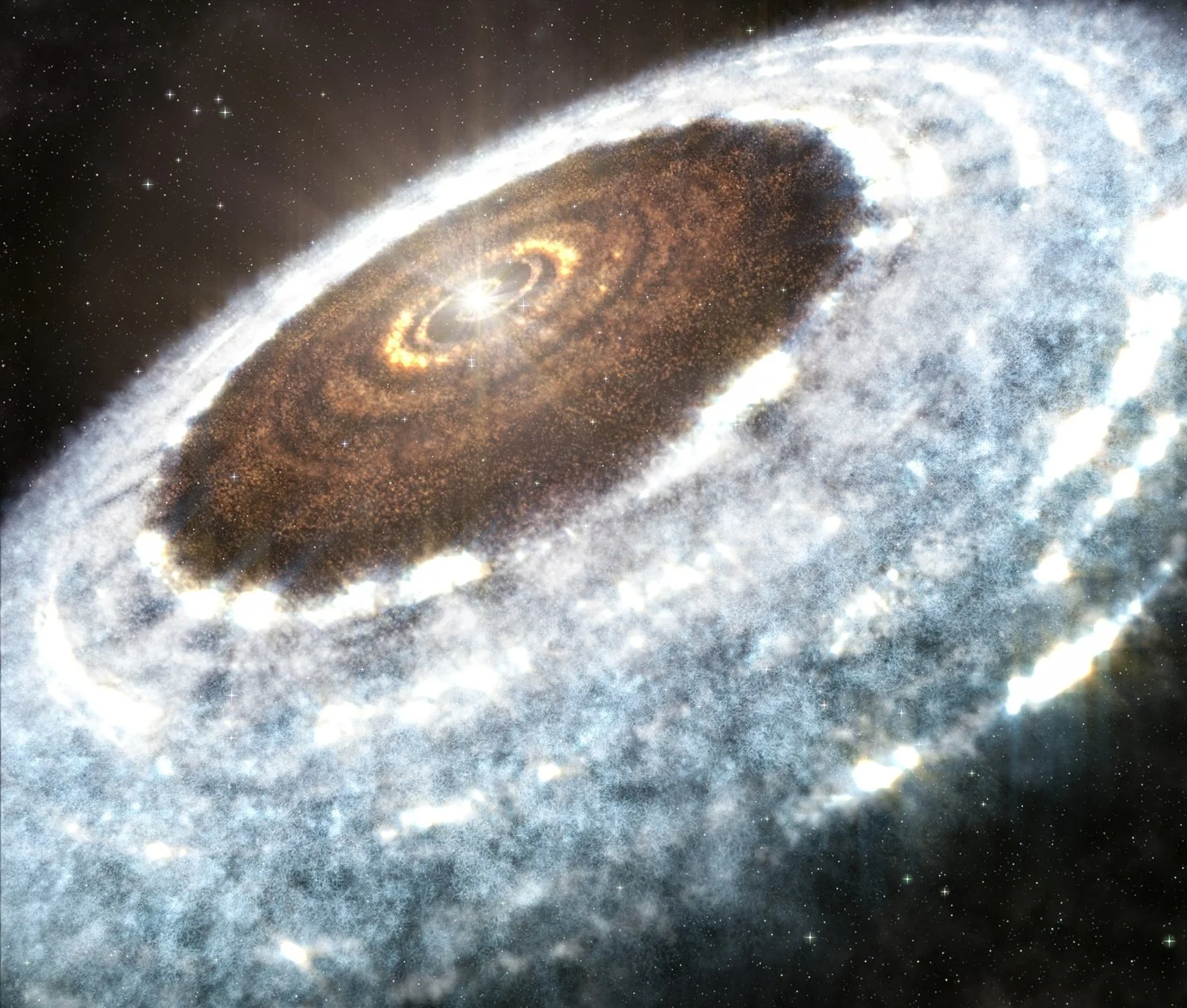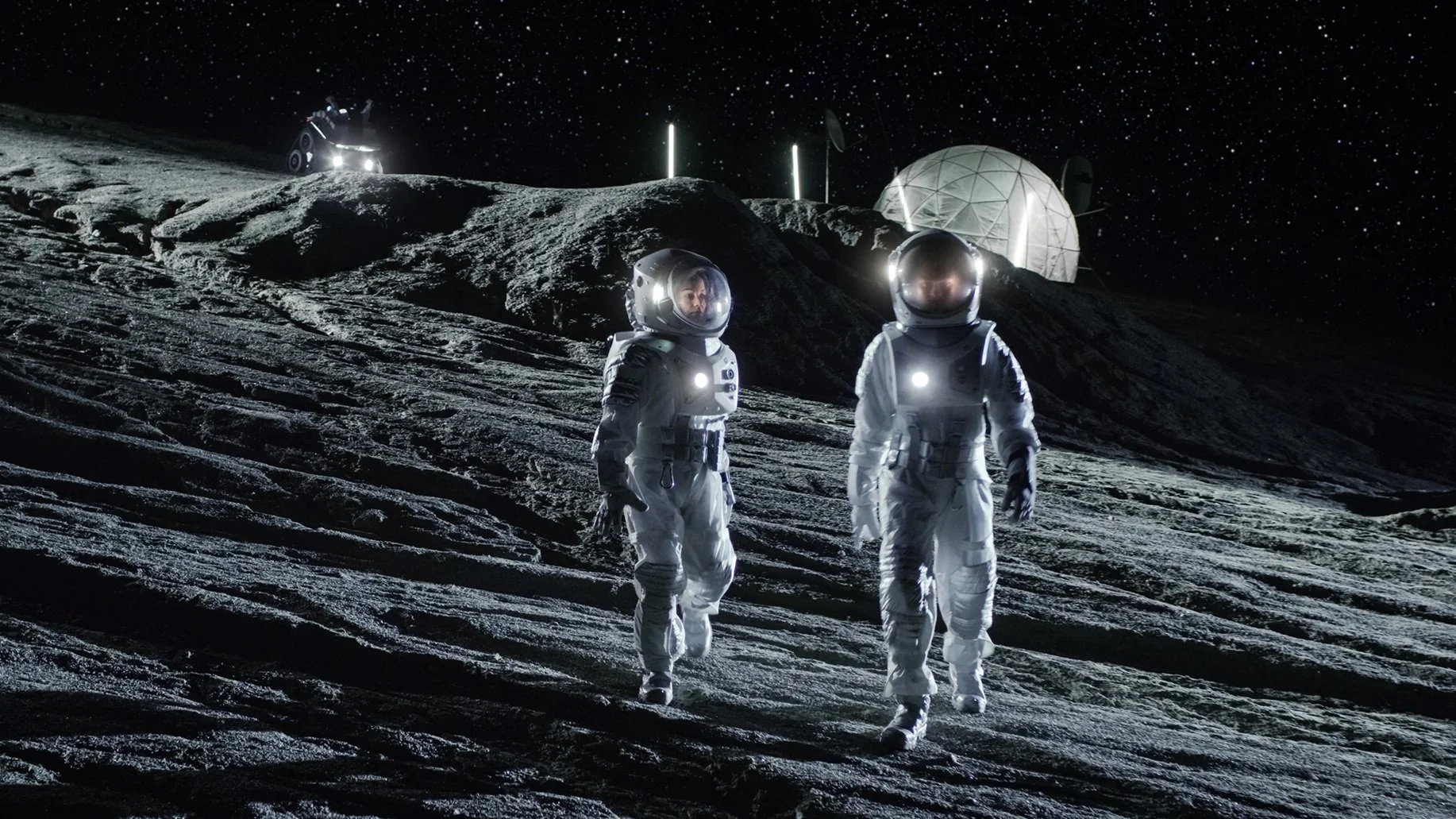Ice found in the vast reaches of space isn't as simple as previously thought. Contrary to long-held assumptions, new research from scientists at UCL (University College London) and the University of Cambridge has revealed that space ice contains tiny crystal structures, making it much more complex than just frozen, disordered water.
This image displays the structure of low-density amorphous ice, with many tiny white crystallites dispersed throughout the blue amorphous material. - Image Credit: Credit: Michael B Davies, UCL and University of Cambridge
The Mystery of Cosmic Ice
Ice on Earth is orderly—just look at the perfect symmetry of snowflakes. In contrast, ice in space was believed for decades to be amorphous, meaning it lacked any structure because the extremely cold temperatures prevented crystals from forming. But according to new research published in Physical Review B, this common space ice, known as low-density amorphous ice, isn't entirely without order.
Using advanced computer simulations, scientists found tiny crystals just a few nanometers wide—about the thickness of a single DNA strand—embedded in the otherwise chaotic structure. Dr Michael B. Davies, lead author of the study, explained: “We now have a good idea of what the most common form of ice in the Universe looks like at an atomic level."
Could Space Ice Hold Clues to the Origin of Life?
This discovery could affect how we understand the beginnings of life on Earth. A popular theory, known as Panspermia, suggests that life's building blocks arrived here via ice comets. Previously, amorphous ice was considered an ideal medium for transporting simple amino acids.
However, according to Dr Davies, "Our findings suggest this ice would be a less good transport material for these origin of life molecules," because the tiny crystals leave less room for the building blocks to be embedded. But there’s still hope: "The theory could still hold true, as there are amorphous regions in the ice where life's building blocks could be trapped and stored."
Jupiter’s Icy moon Ganymede - Image Credit: NASA/JPL-Caltech/SwRI/MSSS/Kevin M. Gill
Beyond Space: What Does This Mean for Technology?
Interestingly, these findings don’t only affect our understanding of space but might also lead to advancements on Earth. Professor Christoph Salzmann from UCL Chemistry noted that amorphous materials like glass fibers, essential for transmitting data, might perform better if their tiny crystal impurities could be removed. This new research on space ice could thus pave the way for improving modern technology.
The research team continues to investigate the mysteries of amorphous ice. Their work has opened new questions about whether truly amorphous ice exists, or if all ice naturally contains tiny crystals.
"Water is the foundation of life but we still do not fully understand it," said co-author Professor Angelos Michaelides from the University of Cambridge. "Amorphous ices may hold the key to explaining some of water’s many anomalies."
Understanding these subtle forms of ice might even revolutionize space exploration, potentially helping shield spacecraft from radiation or providing essential fuel for future missions. As Dr Davies pointed out, "We need to know about its various forms and properties."
If you are interested in more details about the underlying research, be sure to check out the paper published in the peer-reviewed scientific journal Physical Review B
Sources, further reading and more interesting articles:
How long has the ice on the Martian north pole been there? - (Universal-Sci)
Why Jupiter's four largest moons are among the most interesting worlds of our solar system - (Universal-Sci)
Low-density amorphous ice contains crystalline ice grains - Physical Review B
Too busy to follow science news during the week? - Consider subscribing to our (free) newsletter - (Universal-Sci Weekly) - and get the 5 most interesting science articles of the week in your inbox
FEATURED ARTICLES:

